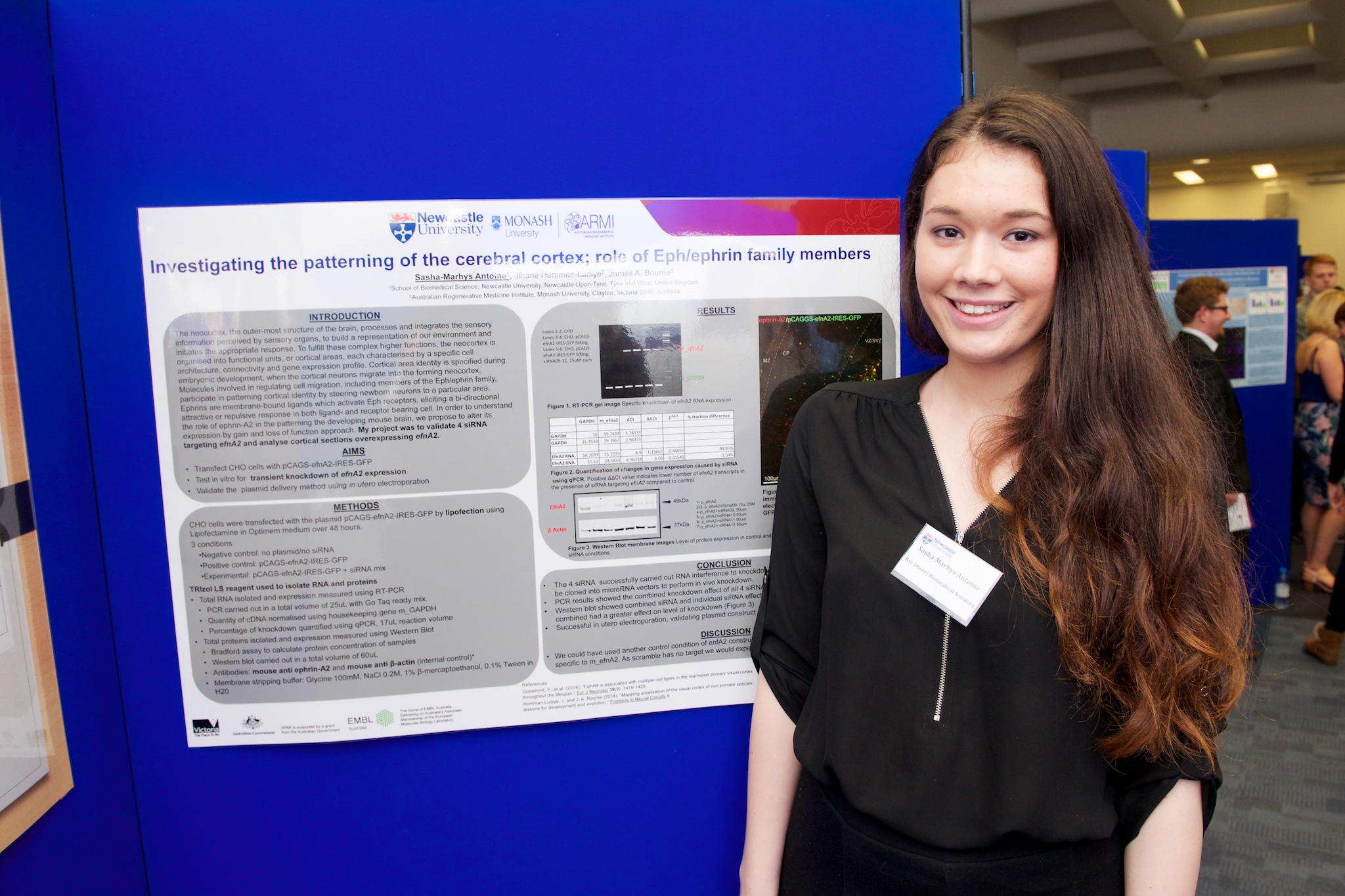2014 participants
 Sasha-Marhys Antoine
Sasha-Marhys Antoine
- Bsc (Hons) Biomedical Sciences
- Investigating the protomap hypothesis in the primate cerebral cortex; EPH A receptor expression
The cerebral cortex, the seat of consciousness and intelligence, is mapped out into functional areas; for instance vision, movement control and language are controlled by distinct areas that are the same across normal individuals. It is currently believed that cortical nerve cells are born knowing what their functional role will be (the protomap hypothesis) but this is based on experiments done in mice. Humans have a much larger and more complicated cerebral cortex with many more cortical areas. Faults in mapping may occur in developmental disorders such as autism and cerebral palsy. In order to understand this process better in primates, Monash and Newcastle have a collaboration to study this in human fetal brain tissue (Newcastle) and in marmoset monkeys (Monash). So far we have shown that a group of molecules called EPH A receptors, are present in marmoset visual cortex at later stages of development, and in human posterior cortex (from which the visual cortex will develop) at earlier stages. These receptors define the cortical cells as of the visual cortex and attract nerve fibres connected up to the eyes to grow towards them. To complete the study, the student will try to detect the presence of EPH A receptors in early developing marmoset cortex, and also test for the presence of other molecules that were detected in the human tissue, that may control the making of EPH A receptors by nerve cells.
Funding Source: Newcastle University
